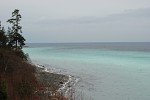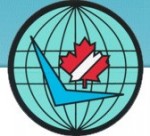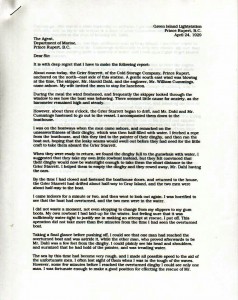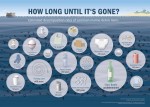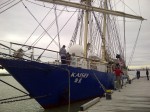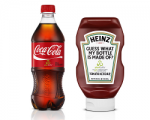Do you want to visit some of British Columbia lighthouses? A lot of them are isolated, but there are a few that tourists can easily see. Some of these are manned; some are automated.
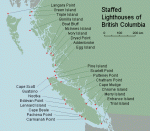 One of the best websites for finding the location of the lighthouses is Ron Ammundsen’s Lighthouses of British Columbia website. On the opening page he has maps of manned/staffed and unmanned lighthouses and their locations. This will show you what is available, and where they are located. To find photos and information on the chosen lighthouses check out Google.
One of the best websites for finding the location of the lighthouses is Ron Ammundsen’s Lighthouses of British Columbia website. On the opening page he has maps of manned/staffed and unmanned lighthouses and their locations. This will show you what is available, and where they are located. To find photos and information on the chosen lighthouses check out Google.
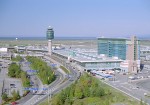 One of the main items you will require is a place to stay. When flying to British Columbia via International Airlines (from another country) your point of entry would be Vancouver International Airport (YVR). From there you have a variety of ways to accommodate yourself – from hotel, motel, bed and breakfast, camp site, hostel, inn, resort, etc. Select from the list on the Hello BC website. Enter your dates, town, and preference, and select a place to stay. Really easy website to find your way around.
One of the main items you will require is a place to stay. When flying to British Columbia via International Airlines (from another country) your point of entry would be Vancouver International Airport (YVR). From there you have a variety of ways to accommodate yourself – from hotel, motel, bed and breakfast, camp site, hostel, inn, resort, etc. Select from the list on the Hello BC website. Enter your dates, town, and preference, and select a place to stay. Really easy website to find your way around.
 The next thing after a room for the night, is a place to eat. Canada is well-known for its diversity in the culinary arts, and British Columbia is no exception. The easiest way is to introduce you to a special webpage called Dining, again from Hello BC. This is an interactive menu connected to a BC map. Pick what type of food you want, where you want to eat, and wait for the results. It is well organized and easy to use.
The next thing after a room for the night, is a place to eat. Canada is well-known for its diversity in the culinary arts, and British Columbia is no exception. The easiest way is to introduce you to a special webpage called Dining, again from Hello BC. This is an interactive menu connected to a BC map. Pick what type of food you want, where you want to eat, and wait for the results. It is well organized and easy to use.
The choice is amazing! Your selection may be saved as a PDF file for reference. Pick your town, pick your food and grab a cab to good dining. The nice thing is you can look on the map to see if a location is near your place of residence for any place in BC. The map (left) shows the 538 results from just selecting West Coast. Each red flag is a city with multiple locations in each. Each result will give you location, telephone number and website if available. A very comprehensive help page.
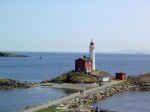
Before you come you should decide where you want to go, and what lighthouses you want to see. Most of the available lighthouses will be seen in and around the cities of Vancouver, and Victoria, BC. Others are visible from the ferries, and up and down Vancouver Island. On the Hello BC website on the Things To Do page there are no exact listings for lighthouses but if you type lighthouse in the search box (upper right) you will get a page of lighthouse listings, things lighthouse, resorts near lighthouses, etc. With the map from the website on Lighthouses of British Columbia you can then sort out where you want to go and which lighthouse you may wish to visit..
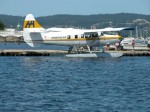 If you want to get off the beaten track, you can fly into many places or take ferries, hike in, or even rent a local water taxi or fish boat. The opportunities are unlimited depending on your time and finances. On the Hello BC webpage is also a section on Transportation and Maps listing many services available in BC.
If you want to get off the beaten track, you can fly into many places or take ferries, hike in, or even rent a local water taxi or fish boat. The opportunities are unlimited depending on your time and finances. On the Hello BC webpage is also a section on Transportation and Maps listing many services available in BC.
Take your time, talk to other tourists, and if you have any questions, maybe I or other readers can help you out. They don’t call it Beautiful BC for nothing. Enjoy!
******************************
To help you enjoy the coast more, it might be helpful to read up on a few of the things you might find at the shoreline. A great website for this is Vic High Marine. Check out the information on all things you might stumble across, or see on your trip.
Any more good advice out there? Please send it on and I will post it.

